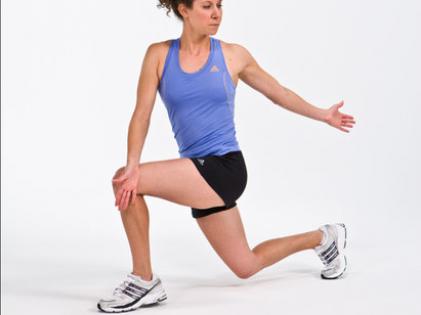Why do you train the way you train? A confronting question for you to consider!
Not just to consider from an emotional or motivational point of view, but why do you choose the exercises and movements that constitute your weekly training program?
This article is not about motivation, but about resistance training, and this question is extremely pertinent: Why do you train the way you train?
If you look in any gym or health club today, you will see people using all sorts of machines to train with. You will see numerous people doing a huge variety of isolation exercises in order to stimulate the muscles to become bigger, stronger and more functional. Some fitness professionals continue to write training programs for clients that break the body into various body parts and even individual muscles or muscle groups – they talk about chest, back, biceps, triceps, shoulders, glutes, quads, hamstrings and calves.
My question is: Do the advances in science support such programs?
Let’s examine the roots of this type of training. To do this, we have to go back to the 1930s, when much of our understanding of the anatomy of the body came to prominence.
This type of anatomy is known as ‘table-top anatomy’. It came about through researchers using electrical equipment to stimulate the individual muscles of cadavers (dead bodies) in order to see what effect they had on bones and joints. We learned, for example, that the biceps flex the elbow, the triceps extend the elbow and the soleus extends (plantarflexes) the ankle.
The research from the 1930s was corroborated in the 1950s when extensive muscle testing was performed as a result of the polio epidemic. In this case, researchers used living individuals, but again their research was conducted with the subjects lying on a table. The researchers did their upmost to isolate individual muscles and learn their effects on bones and joints as it gave them a lot of information in identifying when a person was starting to suffer the effects of the muscle-wasting polio disease.
It was in the 1950s that bodybuilding rose to prominence, and the bodybuilders obviously used knowledge of anatomy when designing training programs. To this day, bodybuilding ideas continue to dominate, although the vast majority of the population do not want to look like bodybuilders.
In the 1970s resistance training took a different turn, a guy called Nautilus produced a range of machines that allowed people to isolate muscles whilst allowing for stricter technique and often allowed for an increase in the amount of weight or load. An exercise variable that we all know is required for muscular hypertrophy. On the face of it, this sounds like a great idea – we are all taught the importance of good technique and machines mean you can even sit down while you do it!
At this point you may want to consider a couple of questions – how many veteran bodybuilders do you know who are pain-free? Why are the majority of bodybuilders so much weaker, even though they have more muscle, than traditional strongmen? It is ironic that the strongmen that had preceded the bodybuilding movement, and knew very little about anatomy, used very integrated and function-based movements to train for strength and power.
How powerful and strong were the strongmen of the early 1900s?
Eugene Sandow, one of the most famous strongmen of all time, could clean and press a single dumbbell overhead, weighing over 300 pounds (close to 140kg!).
His training tools? Predominately dumbbells and barbells.
A key word to consider with the types of movement we are talking about here is INTEGRATED, the entire body functioning as one integrated unit to complete a movement.
This is one of the premises behind Fitness First's Dynamic Movement Training.
Dynamic Movement Training provides significant bang for your training buck
- Movement is Tri-planar– this means it challenges you in more than one plane of motion, traditional gym programs focus on only one plane of motion, the sagittal plane.
- Movement is integrated– as previously mentioned the movement should involve the entire body moving as one integrated unit.
- Movement uses appropriate gravity-orientation– most movements in everyday life require us to be standing up under the forces of gravity.
- Movement is propriceptively enriched– meaning the link between the brain and the body, with the brain and body working together to move efficiently within a given environment.
- Movement produces dynamic stabilization– this is your body’s ability to maintain control and balance through movement.
You can experience Dynamic Movement Training for yourself this week at any Fitness First club with a free 7-day pass for Australian Fitness Week.
You can also experience our signature small group training classes, fitness workshops and our new mind/body outdoor movement training. For further information, visit our website - and happy moving!



















__small.png)










